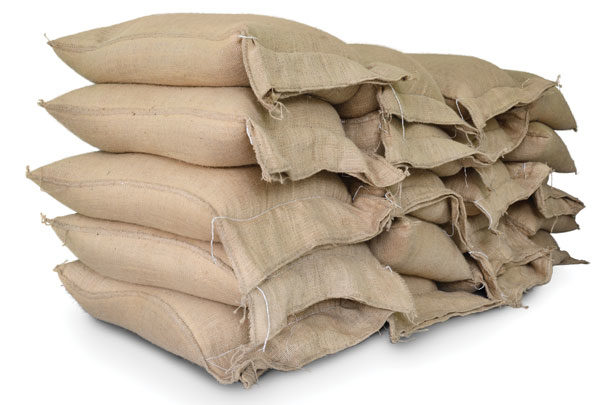Species
L.H. Bailey, the author of the Manual of Cultivated Plants, defines species as “a kind of plant or animal distinctly different from other kinds in marked or essential features that has good characters of identification, and may be assumed to represent in nature a continuing succession of individuals from generation to generation.”
So essentially, the main traits of plants within the same species group will bare similar characteristics when reproduced from seed with some variation.
For example: Trifolium pratense, commonly known as red clover, and Trifolium repens, which is white clover, are different plant species.
Variety
There are endless variations of plant characteristics that still fall under the hierarchy of the species classification. These varieties are defined by Dr. Michael A. Dirr as “Individuals displaying rather marked differences in nature. The differences are inheritable and reproduce true-to-type in succeeding generations.”
In order to distinguish varieties from cultivars, think of varieties as species variations that occur in nature without human cultivation.
Cultivar
Cultivars are varieties of plants specifically bred by humans for cultivation. They reproduce offspring that are true-to-type under controlled conditions. Often, the cultivar name is the trade name marketed by the seed company.
For example, Durana and Patriot are two cultivars of white clover sold by Pennington Seed. They have distinct similarities and differences that are apparent and are reproduced in their offspring. When using binomial nomenclature to describe a cultivar, the species precedes the cultivar name as follows: Trifolium repens ‘Durana.’
By the time you are ready to shop for seed, you should have your species selected and a few potential cultivars on your list of acceptable choices.
Farm factors
The greatest factor for you to consider as a forage producer is the realistic production capability of your farm. Some farm factors are out of your control, and some can be adjusted based on your goals. Walk your site and make a list of positives and negatives that you observe.
Take soil samples and examine the results before you shop. The more you know about the productive potential of your soils, the easier it will be to select, establish and maintain your forage during the growing season.
While you may not be able to change your soil type, you can adjust fertility and pH over time. Make plans to apply the right fertilizer and lime at the right rate, place and time. Soil pH does not change quickly. It can take six months or more for lime to raise the pH of an acidic soil even a tiny bit. Select your cultivar based on the pH you have, not the pH you hope to have in five years.
Factors like compaction, slope, drainage, sunlight exposure and forage harvest method can influence which cultivar is best for your system as well. Due to root structure, stem elongation and maturity rates, some cultivars are more appropriate for hay or more appropriate for grazing systems.
Also, take into consideration the previous history of the site. Converting from row crops, woodlands or a previous pasture all have different challenges. Buying coated seed may be a good idea if there is a history of disease issues or pests.
When planting a legume, be sure the seed comes inoculated or with an inoculant packet of the appropriate rhizobia (soil bacteria). The rhizobia are responsible for converting atmospheric nitrogen into plant-available nitrogen. This is especially important if inoculated legumes were not previously established in the field.
Regional concerns
Once you feel familiar with the important forage factors of your farm, look at the results of regionally conducted forage variety tests. Contact your local extension office for help locating the most current and local field trial results.
If you are farming in Ohio and shopping based on variety performance trials conducted in Tennessee, you may end up unsatisfied with your results. Look at trial variables such as total rainfall, soil and air temperatures, soil type, fertilizer and pesticide applications, and number of years evaluated. With the potential for drastically different weather year to year, trials conducted for multiple years are typically more trustworthy.
Most land-grant universities conduct variety trials for crops, including forages. These types of trials are valuable because they are unbiased. Performance trials conducted by seed companies can be reliable, but it is important to remember that the company wants you to buy their seed and not their competitor’s seed. You may not be getting the whole story if you only compare cultivars produced by the same supplier.
Reputable suppliers
Once you have done your research and put together a list of potential winners for your farm, shop with a reputable supplier. This includes a retailer with clean facilities, knowledgeable staff and excellent customer service. Seed companies would be glad to send you a catalog full of details about their seed options, so do not hesitate to ask for one.
Contact the seed dealer with your cultivar list and have a conversation about what you are looking for and what they can offer. Look at seed tags and compare production dates, germination rates and pounds of pure live seed.
This is the year 2019, and you can buy almost anything online, but do it with caution. What you see is not always what you get. Call the supplier and have a real conversation with them about their seed, including how the seed is stored, shipped and the information mentioned previously that should be included on every bag of seed.
An investment in high-quality seed will usually pay off during the growing season.
Keeping records
Every segment of agriculture encourages you to keep records. It is no different with cultivar selection of forages.
When you have selected, purchased and planted your desired cultivar, make observations and write them down. Include the seeding date, planting rate, depth, notes about weather, germination success or failure, weed pressures and animal preferences. Share that information with farmers like yourself. The more you know, the more we all can grow.
On-farm research
If you can’t decide between one cultivar and another, get more than one and start your own on-farm research project. Plant the seed under the same conditions in similar locations and watch them grow. Apply the same inputs. Harvest them the same way. Collect yield data. Then compare your results. They may surprise you.
In the book Forage-Livestock Quotes and Concepts, the authors state, “Good variety decisions don’t guarantee success, but bad ones can guarantee failure.”
For your best chance at success, do your research before you shop, rather than settling for whatever is in stock at the local co-op. ![]()
PHOTO: Bags of seeds. Getty Images.

-
Christine Gelley
- Agriculture and Natural Resources Extension Educator
- Ohio State University
- Email Christine Gelley












